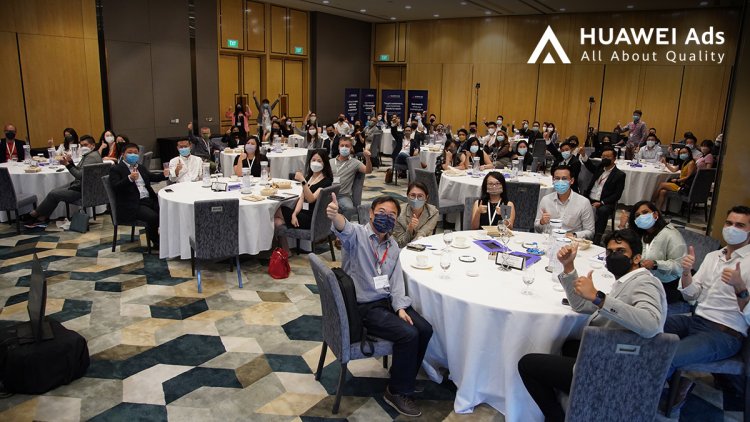Please shed some insights on what Huawei’s strategy for Ads is & why Huawei is moving into this space?
Digital advertising demands have seen a sharp rise over years, driven by the digitalisation of lifestyle and the need for personalised experiences. From a business perspective, data is all around us, accumulated across a variety of platforms and devices. However, the fragmentation in operating systems causes barriers in cross-ecosystem sharing, data exchange and incompatible capabilities, leaving us a large pool of data that is scattered and messy.
HUAWEI Ads’, a mobile marketing platform tailored for HUAWEI devices, is aiming to bridge the data connectivity and minimize the complexity to provide precise reach and more intelligent ads distribution. This is made possible with Huawei’s “1+8+N” all-scenario strategy.
Under the “1+8+N” strategy, the smartphone serves as One (1) centre, and Huawei’s ecosystem partners connect across Eight (8) supporting devices to create a fully-connected IoT environment consisting of Endless (N) services, which presents a key advantage for more cohesive data.
Built upon Huawei’s established ecosystem, HUAWEI Ads is leveraging the synergies between Huawei’s devices, native apps, open capabilities, and over 36,000 third-party app media integrated into its network, to connect the data dots across various smart devices and apps. Hence, making HUAWEI Ads the most effective channel to help advertisers reach out to more than 730 million global potential customers in the ecosystem.
How can mobile app marketers leverage first-party data in a mobile-first advertising world?
HUAWEI Ads’ multiple consumer touchpoints across devices, native apps and partnering apps enable advertisers and brands to shape their first-party data marketing strategy, to better reach and engage mobile users with diverse backgrounds and preferences.
In addition, the HUAWEI Ads Data Management Platform (DPM) provides marketers with an in-depth understanding of the target audience at both the device and app levels. This is achievable by combining first-party data such as app registration, payment and retention, and system data of app installation, usage and location-based services, for advertisers to get a glimpse of user’s usage patterns.
Share insights on upcoming trends in programmatic advertising, cookie-less world and why moving towards first data can be the next game-changer?
Users are now feeling contradictory over the concerns of data privacy and the need for customized digital experience, and it puts advertisers in a tough position. However, moving towards the first-party data strategy can be the solution for marketers as it strikes a balance between data transparency and ad relevancy.
First-party data is the information that comes straight from the users with their consent. It is highly valuable as it is collected directly from the source, which provides marketers with better accuracy in gaining insights and predicting the user behaviour, at the same time complying with data privacy regulations. The first-party data strategy is helpful for marketers to customize their ads and ultimately enhances brand advocacy and nurtures loyal customers.
What trends in Mobile Marketing space that every marketer must understand and follow?
Context is important for ad success, and first-party data is the key to understanding your consumers. The first-party data collection points can be various, and each DMP is unique based on its user pool and portfolios. Advertisers shall fully leverage the touchpoints available when shaping their first-party data strategy, in order to get the full picture of user journey and insights.













